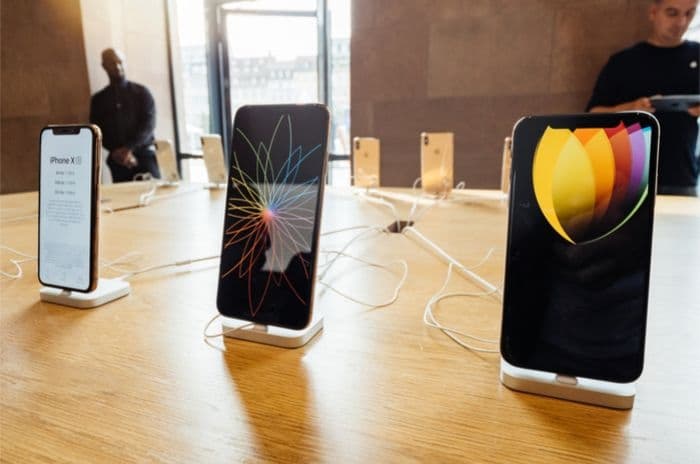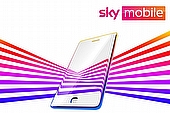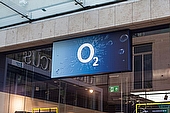For the second time in two years, Apple have flummoxed their fans by releasing multiple iPhones all at once. At least last year we could kind of understand that the 'X' (ten) was a higher number than eight, therefore a better phone.
This year we're faced with even more perplexing decisions, as the phones come to us with confusing names like XS and XR. That's not the last of the jargon either; just wait until we get into the A12 Bionic or the neural engine.
If you've got your heart set on a new iPhone this year, we'll walk you through the main differences between the XS and the XR, to help you make the right choice.

At a glance
| iPhone XS | iPhone XR | |
|---|---|---|
| Price | £999 - £1,349 | £749 - £899 |
| Screen | 5.8 inch AMOLED | 6.1 inch IPS LCD |
| Resolution | 458 ppi | 326 ppi |
| Processor | Apple A12 Bionic | Apple A12 Bionic |
| Rear camera | Dual 12MP | Single 12MP |
| Front camera | 7MP | 7MP |
| Size | 143.6 x 70.9 x 7.7mm | 150.9 x 75.7 x 8.3mm |
| Weight | 177g | 194g |
Which is best: The iPhone XS or the iPhone XR?
Winner: iPhone XR does everything you need, but for significantly less money.
The two handsets may look different, but under the bonnet they are both very similar. We think the iPhone XR simply offers better value for money. Here's why:
The Apple A12 processor and iOS 12 come in both phones. The new larger camera sensor comes in both phones. Better speakers and stereo playback come in both phones.
The limitations of the XR are mainly things you wouldn't miss anyway. Aluminium instead of stainless steel bezel; no 2 x optical zoom on the camera; no dual camera for portrait shots; one grade down on the IP water resistance rating.
However, there are some upsides to the XR which you definitely will notice. 25% longer battery life than the XS; available in a range of glorious candy colours; the extra £200 in your pocket.
The price really is the deal breaker here for us, but there are lots of other reasons to love both these handsets. Here's our review of the iPhone XS vs the iPhone XR.
Price
Winner: iPhone XR - it's pricey, but with good deals on contracts it's more within the reach of the majority than the eye wateringly expensive XS.
The iPhone XS starts at £999 for the 64GB version. For 256GBs it's £1,149 and for the most storage of 512GB you can expect to pay £1,349.
The iPhone XR sits at the bottom of the new range, at a more affordable price of £749 for the basic 64GB version. For 128GB it's £799, and for the maximum storage of 256GB it will set you back £899.
We say 'affordable' somewhat loosely, as even the cheaper iPhone XR is still more expensive than an iPhone 8, and about on a par with the Samsung flagship handsets the S9 and Note 9.
Functionality
Winner: iPhone XS - Although they are fairly similar, differences in the storage choices put the XS ahead.
If you remember the iPhone 5C, you may be tempted to draw comparisons between this and the new iPhone XR. It was, after all, a cheaper, more colourful iPhone, so in many ways it shared plenty of similarities with the XR.
However, in the case of the 5C, it was much less of a phone than the iPhone 5 which was released at the same time. In the case of the XR, Apple have loaded it with all the same hardware you get in the XS and the XS Max.
There are some differences in the screen, battery and camera, but it's certainly on much more of a level playing field with the XS than the 5C was with the 5.
The XS carries an IP68 water resistance rating, which basically means you can throw a pint all over it and simply wipe it off and carry on as normal. The XR's IP67 rating is a step down from this, but still provides some peace of mind if you get caught in a rainstorm.
Storage is worth a mention here, as the XS is available in up to 512GB. The XR, however, is only made in up to 256GB. If having tonnes of films or bucketloads of big games on your phone is a must, the XS wins by a nose.
Display
Winner: iPhone XS - If you need OLED, this is the one to choose.
The screen is probably the biggest differentiator between the XR and the XS. The iPhone XR has a larger screen, at 6.1 inches, but uses a liquid retina LCD panel. The XS, on the other hand, has a 5.8 inch screen but makes the most of the latest Super Retina OLED technology.
OLED is well known for presenting colours more 'true to hue', and for being brighter and crisper than LCD. Blacks are blacker too, which can be important for film buffs and lovers of high resolution games.
The lower resolution of the XR, 326ppi compared to 458ppi, could be an issue for some. If you use your phone for a lot of media watching or gaming, the loss of resolution will almost certainly be noticeable. But do bear in mind that 326ppi is still three times higher than a 40 inch 4K TV (110ppi).
However, although LCD can't match OLED in terms of blacks and contrast ratios, for most users they're more than good enough.
Design
Winner: iPhone XR - Who doesn't want a gorgeously brightly coloured iPhone?
So, the iPhone XS is literally exactly the same as the iPhone X aesthetically. The home button is still absent, and in all dimensions and design features it's a carbon copy. The only small difference here is the inclusion of a gold colour choice in addition to the standard Space Grey and silver.
The XR, on the other hand, is something different. It's dimensions are different to the iPhone X and XS, but it's not a million miles away aesthetically. What is new, however, is the wide range of colours available, something we've not seen from Apple since the 5C.
Colour choices include coral, blue, yellow and red, as well as play-it-safe black and white. And they're not cheap looking either. The finish is wonderfully candy-ish, with a deep metallic colouring that we think is just beautiful.
Around the outside of both handsets runs a metal band. On the XS, this is supplied in stainless steel, whereas on the XR its aluminium. The stainless steel does lend a touch of quality to the handset, but whether that's £200 worth of quality is for you to decide.
Camera
Winner: iPhone XS - the only difference here is the lack of 2 x optical zoom on the XR.
Both these new phones use the same 12MP main camera, which includes a larger sensor for better light reception. The cameras function better in less than optimal conditions than their predecessors, with better balance of light and clearer detailing.
The XS, however, has not one but two cameras at the rear, one of which is an f/1.8 sensor and the other a wide-angle sensor with an aperture of f/2.4. The lack of a second camera on the XR means there's no 2 x optical zoom here.
Both phones also use Smart HDR for improved shooting, achieved by taking a burst of shots before and after the shutter click. The best of these images are combined into a final picture, for perfect light balance and beautiful images.
For the front facing camera, all of the new 2018 iPhones use the same 7MP f/2.2 sensor.
Both phones have the same ability to post-edit shots, to add bokeh and to take beautiful images. The only reason to choose the XS over the XR here is down to the 2 x optical zoom. If you used it a lot or relied on it often, you'll miss it; otherwise, there's nothing to choose between the two.
Battery
Winner: iPhone XR - It lasts longer. Simple.
The lower resolution of the XR does come with a massive upside; it requires less power. The larger handset also means Apple were able to fit a bigger battery. As a result, the XR features a 2,942 mAh power pack, whereas the XS has a 2,659 mAh.
What this means in reality is that the XR can outlast the XS by as much as 25%; for example:
| iPhone XS | iPhone XR | |
|---|---|---|
| Talk time | Up to 20 hours | Up to 25 hours |
| Internet use | Up to 12 hours | Up to 15 hours |
| Video playback | Up to 14 hours | Up to 16 hours |
| Audio playback | Up to 60 hours | Up to 65 hours |
Apple says that all the new iPhones support faster wireless QI charging, but they haven't released any numbers yet. And with no QI charger included with the handset, you'll have to invest additional pennies if you want to find out.
Both phones will harbour tiny power reserves in the event of a flat battery. This is so NFC transactions can still be used, even when your handset is dead. It's a pretty nice little touch.
Performance
Winner: It's a draw - with the same chipset and operating system, drawing comparisons is impossible
You might have heard of the A12 Bionic chipset which Apple are loading into all their 2018 iPhones. That's because Apple are really excited about it and tend to make a fair bit of noise around their 'breakthrough' in technology.
To be fair, Apple have, for the first time, used a 7nm process to manufacture this chip, which is the smallest ever achieved by a technology company. Smaller building blocks means more transistors, which in turn means more processing power and a generally snappier phone.
Both the XS and the XR have the A12 chipset installed, so you can expect a noticeable difference in speed and capability over the iPhone X. According to Apple, it's 'up to 15% faster' than the A11 on board the X.
This means both handsets are primed for use with AR technology and all sorts of advanced apps that don't really exist yet.
The hexacore processor uses two cores for power and a further four for efficiency, making the batter last longer and the GPU function around 50% faster. The on board neural engine is said to learn as you use the phone, anticipating your preferences for a more customised experience.
More exciting than this is the inclusion of iOS 12, which ensures a more fluid user interface and some handy additional features. Screen time is probably the most notable of these, which is a new introduction from Apple designed to help you monitor how you use your phone.
Summary
Overall winner: iPhone XR - why pay more when you can do it all with this?
While it's true that Apple have chipped away at the feature set of the XS in order to produce the XR, the bottom line is that most of what's lost was pretty expendable anyway. We've picked it as our winner thanks to the eye catching colours, longer battery life and more practical pricing.
Those who desperately miss a particular feature (dual camera, OLED display) may find themselves forced to pay the premium for the XS. Similarly, those who are determined to have nothing less than the flagship model will be delighted to hand over their cash for the more expensive phone.
For the rest of us, the XR is the model to buy. It's ridiculously powerful, infinitely capable and slightly less ludicrously priced than its other brothers.









Comments